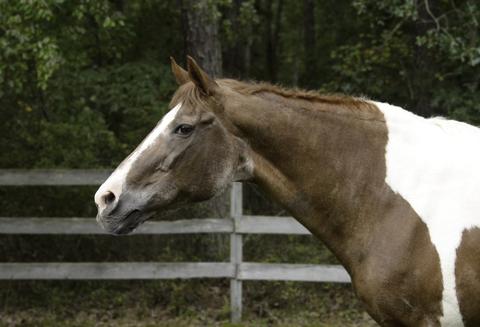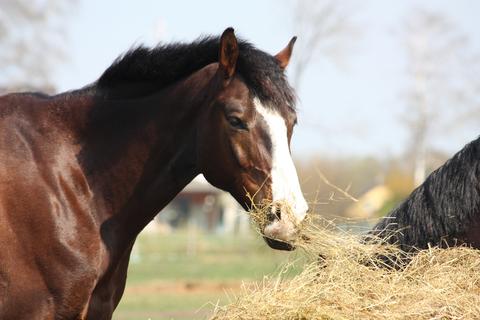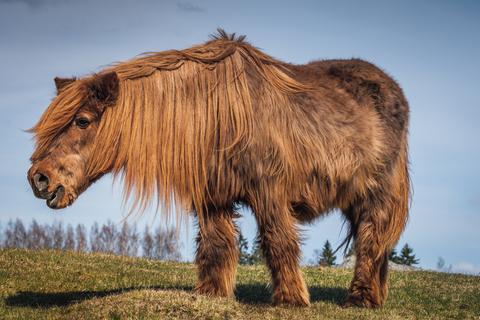Posted: 6th September 2018 | Back to news feed

Whether you own a horse simply for pleasure, for competing with as an amateur or as a professional rider where the horse represents a key element of your business, they will all, at some point, feel the effects of old age. A geriatric horse is defined as a horse over the age of 20, although there are quite large discrepancies between the life expectancy of different breeds and therefore when they begin to show signs of ageing. The stable management and training decisions made throughout the horse’s life, such as how much to work or not work them while they are growing, the intensity of work carried out, where you keep them and what you feed them will all have an impact on how they age, but genetics and luck also play their part.

Health problems in the older horse can be grouped into the following categories: musculoskeletal disorders, digestive tract problems, breathing difficulties and complications from PPID (formerly referred to as Cushings disease). Here, we detail the different ways we can identify and manage different disorders and problems that may arise in the geriatric horse.
Musculoskeletal Disorders
Horses are trickle feeders, designed to spend a large amount of their time browsing and eating, taking steps every few mouthfuls and therefore spreading their weight evenly across both front legs. Horses who develop a habitually unhealthy stance when they eat, such as with one leg stretched out in front of them, may alter the development of their front hooves and develop performance-limiting compensatory movement patterns. Twisting the head or holding it unnaturally high to eat from a hay net can also negatively impact the horse’s posture, while elderly horses may struggle to eat very short grass or other feed presented from the floor. A horse with mobility issues may avoid lying down, as they are unable to rise quickly enough if they feel unsafe.
This is where careful stable management is key in keeping the older horse mobile and comfortable. Geriatric horses must have enough space to keep moving gently all day, have forage presented in the most natural way possible and have somewhere that they can safely lie down to rest and easily get back up again. Where it is used in equine hospitals, vets have noted how willing horses are to lay down on the revolutionary Comfortstall flooring, even in the strange and unfamiliar surroundings they find themselves in. The Haygain Forager is an excellent tool for presenting forage to the older horse, mitigating the need for haynets and mimicking natural grazing patterns.
Digestive Tract Problems
Older horses may suffer from choke, gastric ulcers and colic more frequently than their younger counterparts, and this could be due to poor dental health. Damaged teeth will affect the ability of a horse to drink and chew properly, and under chewed food can clump together and cause choke, or if a clump of forage is swallowed, it may cause an obstruction colic.

Steaming forage with a Haygain Steamer will help an elderly horse with poor teeth to eat it, as it softens the plant stems, and the warmth of the forage will help to encourage a horse to chew the forage if it has teeth that are sensitive to cold. Steaming also significantly reduces the levels of bacteria, viruses and fungi in forage, which have been linked to the incidence of ulcers in the low (glandular) part of the stomach. If a horse repeatedly suffers from choke, the Haygain Forager will encourage them to take smaller mouthfuls, promoting saliva production and limiting the amount of forage swallowed at any one time.
The horse’s caecum (between their small and large intestine) is full of good bacteria that thrive on a ready supply of plant fibre, and as they break down the cellulose in the plants, create heat to warm the horse’s core. Thermoregulation, the automatic ability to maintain a steady core temperature, is poor in older horses, so a steady supply of forage to keep the caecum topped up with cellulose is vital, particularly in winter. Sugar and starch-based feeds do not have the same effect on the horse’s core temperature, so although the extra calories may help the horse maintain weight, feeding more concentrates won’t help keep an old horse warm in the same way that ad lib forage will.
Breathing difficulties
As previously mentioned, it is beneficial to ensure that the geriatric horse is able to access plentiful forage, but the quality of that forage must be carefully examined to ensure their airways are kept healthy. Equine Asthma (also known as Recurrent Airway Obstruction, or RAO) refers to an allergic, inflammatory response of the lungs caused by repeated exposure to fungal spores and microscopic airborne particles found in hay or irritants such as the ammonia found in deep litter beds or trapped under rubber matting. Once a horse has suffered an attack, they will be ‘sensitised’ for the rest of their lives, when a deterioration in air quality could trigger an attack.
To prevent an attack of equine asthma in the older horse, there are several stable management steps that owners can take. Steaming, for example with a Haygain Steamer, is a proven method for removing the majority of airborne particulates from hay, while careful management of bedding and stable matting is crucial to prevent ammonia build-up. The Comfortstall matting system is not only carefully designed to provide support and cushioning, it also prevents urine soaking underneath it, helping to keep the air in the stable clean and fresh.
If a geriatric horse does suffer from repeated asthma attacks or breathing difficulties, then regular use of a nebuliser either with or without prescription medication can help to clear the lungs of particulates. The Flexineb 2 is a silent, battery operated nebuliser can deliver an aerosol capable of penetrating deep into the lungs where equine asthma develops.
PPID
PPID, which was formerly referred to as Cushings disease, is a malfunction of the pituitary gland at the base of the skull, resulting in a failure to regulate production of the hormone ACTH and therefore the overproduction of cortisol. Some of the clinical signs of PPID, such as lethargy and the loss of topline muscle, are often be mistaken for natural ageing, however its seriousness is now recognised by horse owners, not least as it is a major risk factor for laminitis.

PPID affects 1 in 5 horses over 15 years old, and there is an increasing awareness of the role the environment the horse is kept in plays in triggering the disorder. The links between ultrafine organic particulate pollutants and metabolic dysfunction is still being explored, but it is seen as sensible stable management practice to minimise exposure to these particles. The Haygain Steamer reduces the levels of all airborne particles seen in forage, so may help to combat one of the causes of PPID. In addition, avoiding obesity and high grain diets while meeting optimum vitamin and mineral levels in the diet will help to stave off PPID and help the horse live a long and healthy life.
With thanks to Haygain for their knowledge and expertise. You can find out more about the products mentioned in this piece by visiting the Haygain website. www.haygain.com
The Equestrian Index newsfeed is compiled from articles submitted by advertising members and expresses the opinions of those members. Watsons Directories Ltd shall not be held liable for any inaccuracies or mis-statements therein.
